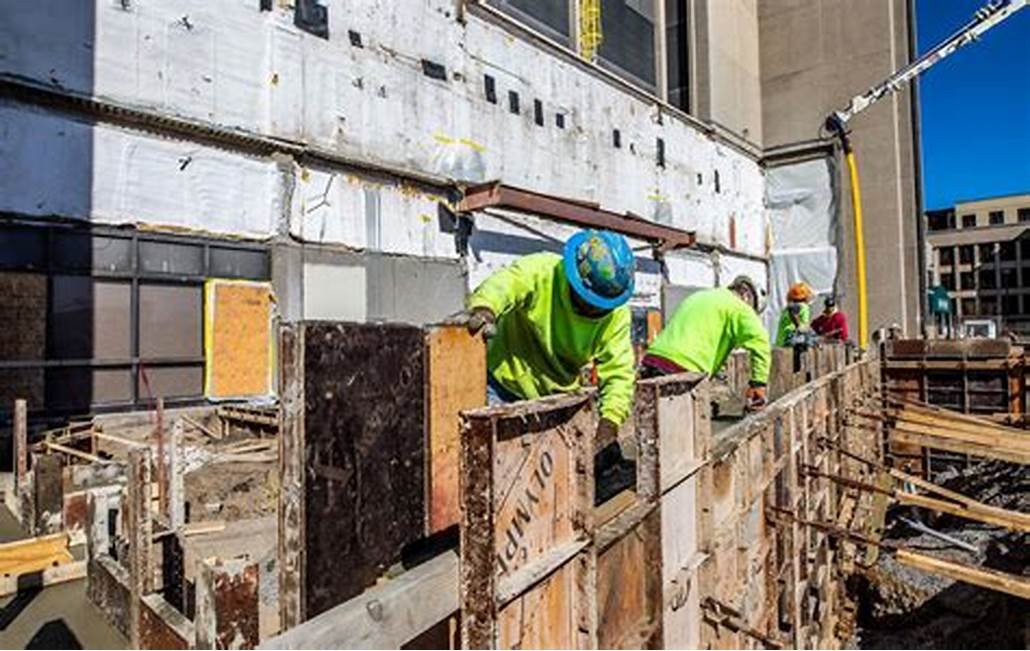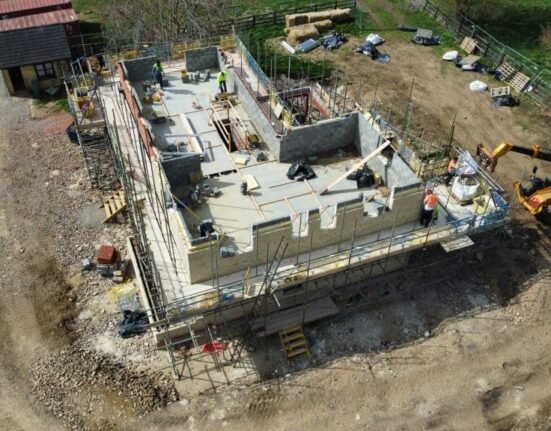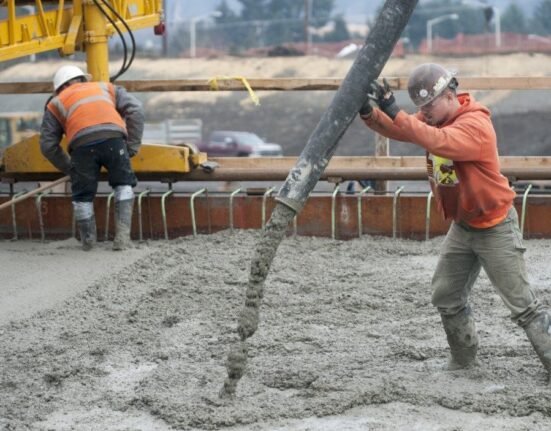The construction industry is undergoing a transformative shift as sustainability becomes a driving force in project planning and execution. As global environmental concerns grow, particularly in the wake of climate change, the focus is now on creating buildings and infrastructure that are not only functional and aesthetically pleasing but also environmentally responsible. Sustainability in construction means looking beyond the traditional materials that have long been used, such as concrete, steel, and wood, and exploring alternatives that reduce environmental impact, lower energy consumption, and optimize resources. Sustainable materials are at the forefront of this revolution. They are redefining how buildings are designed, constructed, and used, creating a pathway for construction professionals to deliver more sustainable and energy-efficient buildings that are both cost-effective and environmentally friendly.
The construction industry is a major contributor to global carbon emissions, with materials such as concrete and steel being especially resource-intensive. Manufacturing cement alone accounts for approximately 8% of global CO2 emissions. These materials, while widely used for their strength and durability, are energy-hungry and contribute significantly to pollution. On top of this, construction projects often generate significant waste, including leftover materials, packaging, and demolished structures. As the world grapples with the dual challenges of resource depletion and climate change, there is an urgent need to rethink construction practices.
Sustainable construction materials aim to address these challenges by reducing the ecological footprint of building projects. These materials are designed to be more energy-efficient, resource-efficient, and reusable, making them a crucial part of efforts to reduce emissions and waste. They can be sourced responsibly, ensuring that they do not contribute to environmental degradation or deplete non-renewable resources. The widespread use of sustainable materials in construction will be a key factor in meeting global sustainability goals, including reducing carbon emissions, lowering energy consumption, and minimizing waste.
For engineers, architects, contractors, and industry stakeholders, this represents a unique opportunity to align building practices with the pressing demands of environmental stewardship. With these materials, the industry can not only reduce its impact on the planet but also create a more resilient built environment that can withstand the pressures of a rapidly changing world.
Engineers and architects are the gatekeepers of innovation in the construction industry. They are the professionals who determine which materials will be used in a project and how they will be applied. Their influence is instrumental in driving the adoption of sustainable materials. Engineers, with their technical expertise, ensure that these materials meet the structural, safety, and durability standards required for construction. They are tasked with finding creative solutions to incorporate sustainable materials into their designs while maintaining the integrity of the project.
Architects, on the other hand, are often the first to explore the potential of new materials. They select materials based on factors such as aesthetic appeal, performance, and sustainability. For architects, sustainable materials provide an opportunity to design buildings that not only look beautiful but also reduce energy consumption, improve indoor air quality, and minimize environmental impact. The collaboration between engineers and architects is essential for the successful integration of sustainable materials in construction projects, as it ensures that the building’s design, functionality, and sustainability goals are aligned.
As the demand for green construction grows, the role of engineers and architects will become even more critical. Both professionals must stay updated on the latest developments in sustainable materials and construction practices to deliver innovative, cost-effective, and environmentally responsible solutions to clients.
Sustainable materials are diverse, ranging from renewable resources to innovative technologies that reduce the carbon footprint of construction projects. Each material brings unique advantages in terms of performance, cost-efficiency, and environmental benefits. The following are some of the most promising sustainable materials currently making an impact in the construction industry:
- Bamboo: Known for its exceptional strength-to-weight ratio, bamboo is a versatile material that is increasingly used in construction. As one of the fastest-growing plants on Earth, bamboo is a renewable resource that can be harvested quickly and regrown in a fraction of the time required for traditional hardwood trees. Its resilience makes it suitable for structural applications, while its aesthetic qualities lend themselves to both modern and traditional designs. Bamboo is used for flooring, furniture, and even as a replacement for steel reinforcement in concrete.
- Recycled Steel: Steel is one of the most commonly used materials in construction, but it is also one of the most energy-intensive to produce. Recycled steel, however, offers a more sustainable alternative. By reusing steel from demolished buildings or scrap metal, the environmental impact of production is reduced significantly. Recycled steel retains the same strength and durability as newly produced steel, making it a viable option for structural elements, such as beams, columns, and reinforcement. The use of recycled steel also reduces the need for mining and processing raw materials, contributing to a more sustainable industry.
- Hempcrete: Hempcrete is a sustainable alternative to traditional concrete. Made from hemp fibers mixed with lime, hempcrete is lightweight, strong, and highly insulating. It provides excellent thermal and acoustic insulation, reducing the energy required for heating and cooling buildings. Hemp is also a fast-growing, renewable resource, making hempcrete a sustainable and low-carbon alternative to conventional concrete. Additionally, hempcrete is non-toxic and has a lower environmental impact in terms of production and disposal.
- Recycled Concrete Aggregate (RCA): Concrete is the most widely used construction material globally, but it comes with a high environmental cost. Using recycled concrete aggregates (RCA) as a substitute for virgin materials helps reduce the environmental footprint of construction projects. RCA is produced by crushing and processing old concrete, which reduces waste and lessens the demand for raw materials. The strength of RCA is comparable to that of traditional concrete, making it a reliable option for a wide range of construction applications, from foundations to roadways.
- Cross-Laminated Timber (CLT): Cross-laminated timber (CLT) is a sustainable and high-performance building material that is gaining popularity for use in multi-story buildings. CLT is made by bonding layers of wood in alternating directions, creating a strong, stable, and lightweight material. It has a lower carbon footprint than concrete or steel, and its ability to sequester carbon throughout its life cycle makes it an environmentally friendly alternative. CLT also offers excellent insulation properties and can be used for a wide variety of applications, including walls, floors, and roofs.
- Green Roofs and Living Walls: Green roofs and living walls are an innovative way to integrate nature into urban construction. These systems use plants to create a natural insulation layer, reduce stormwater runoff, and improve air quality. Green roofs are installed on the tops of buildings, while living walls are vertical gardens attached to building exteriors. Both systems help reduce the urban heat island effect, promote biodiversity, and contribute to the overall sustainability of the building. In addition, they can provide aesthetic benefits and create spaces for relaxation and recreation in urban areas.
The adoption of sustainable materials offers numerous long-term benefits for the construction industry. These materials not only improve the environmental performance of buildings but also provide financial and social advantages for developers, building owners, and occupants alike.
- Cost-Effectiveness: While sustainable materials may require a higher initial investment, they often result in long-term cost savings. Many sustainable materials, such as hempcrete, bamboo, and CLT, have superior insulating properties, which reduce the need for energy-hungry heating and cooling systems. Additionally, buildings constructed with these materials often require less maintenance over their lifespan, reducing repair and replacement costs.
- Enhanced Energy Efficiency: Sustainable materials like recycled steel, cross-laminated timber, and hempcrete provide excellent thermal insulation, which can help reduce a building’s energy consumption. By using materials that improve energy efficiency, buildings are able to maintain a comfortable indoor temperature with less reliance on artificial heating or cooling, leading to lower energy bills for building owners and tenants.
- Improved Indoor Air Quality: Many sustainable materials, such as bamboo and hempcrete, are free of toxic chemicals and volatile organic compounds (VOCs), which are commonly found in traditional building materials like paints and adhesives. These harmful substances can negatively impact indoor air quality and the health of building occupants. By opting for non-toxic materials, construction professionals can create healthier living and working environments.
- Increased Resilience: Sustainable materials are often more durable and resilient to environmental stressors, such as extreme weather conditions, moisture, and fire. For instance, cross-laminated timber is fire-resistant and can perform well in seismic regions, while bamboo’s strength-to-weight ratio makes it an ideal material for earthquake-resistant construction.
The future of construction lies in the integration of sustainable materials that reduce the environmental impact of buildings and infrastructure. Engineers, architects, and contractors have a unique opportunity to embrace these innovative materials and drive change in the construction industry. By doing so, they can help create buildings that are not only more sustainable but also more cost-effective, energy-efficient, and resilient.
The journey toward a greener construction industry is not without its challenges. However, the adoption of sustainable materials will be essential in meeting the growing demand for eco-friendly, energy-efficient buildings. As the industry continues to innovate and evolve, the use of sustainable materials will play a critical role in shaping the next generation of construction.
Are you ready to build for a greener future? Join epci.ng for the latest updates, job opportunities, and industry insights on sustainable materials and cutting-edge construction trends. Stay ahead of the curve and discover how sustainable construction can benefit your projects. Join us on WhatsApp or Telegram for real-time news. Have a report or article to share? Send it to report@epci.ng. Follow us on X (Twitter), Instagram, LinkedIn, and Facebook for more industry insights.







Leave feedback about this